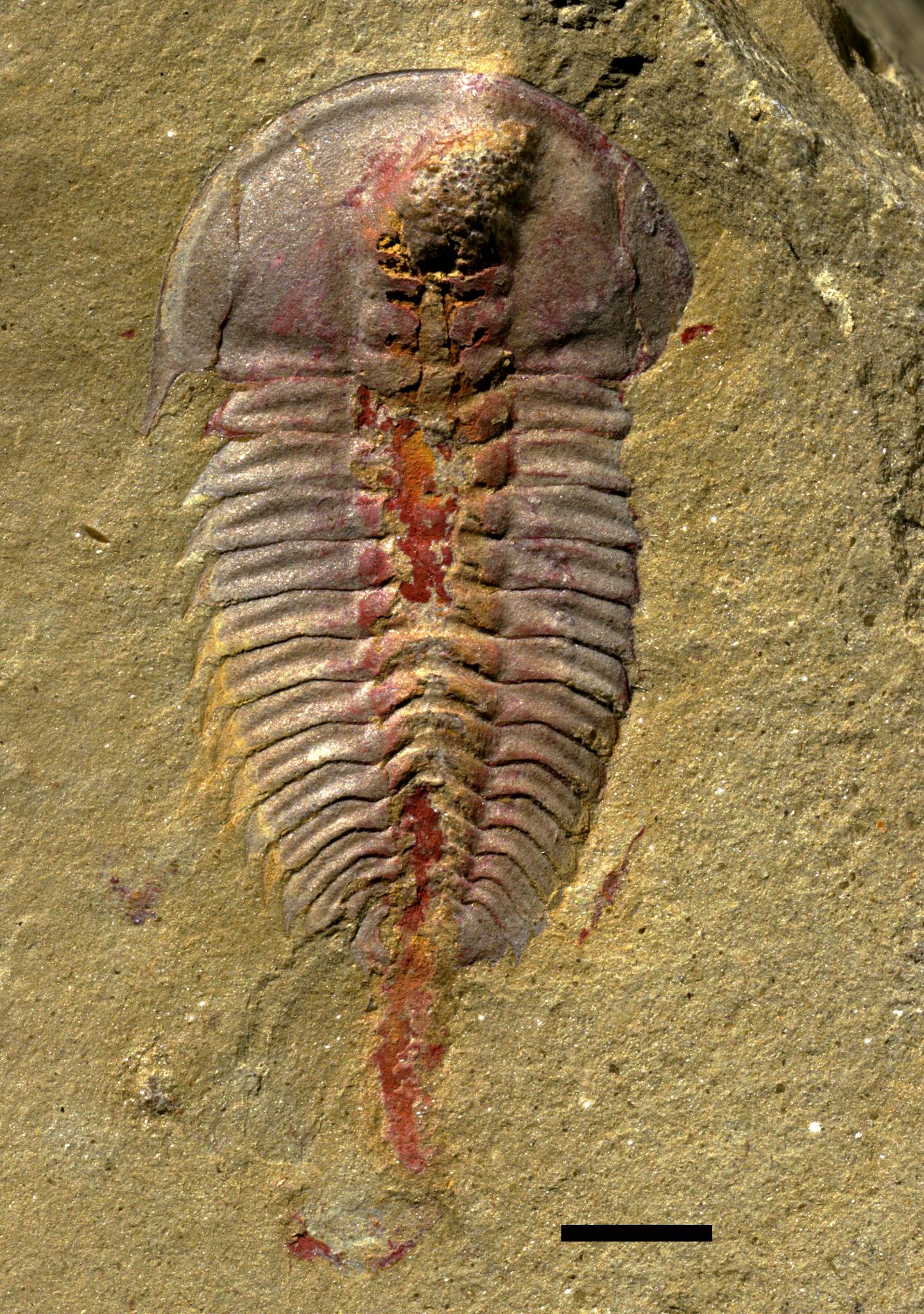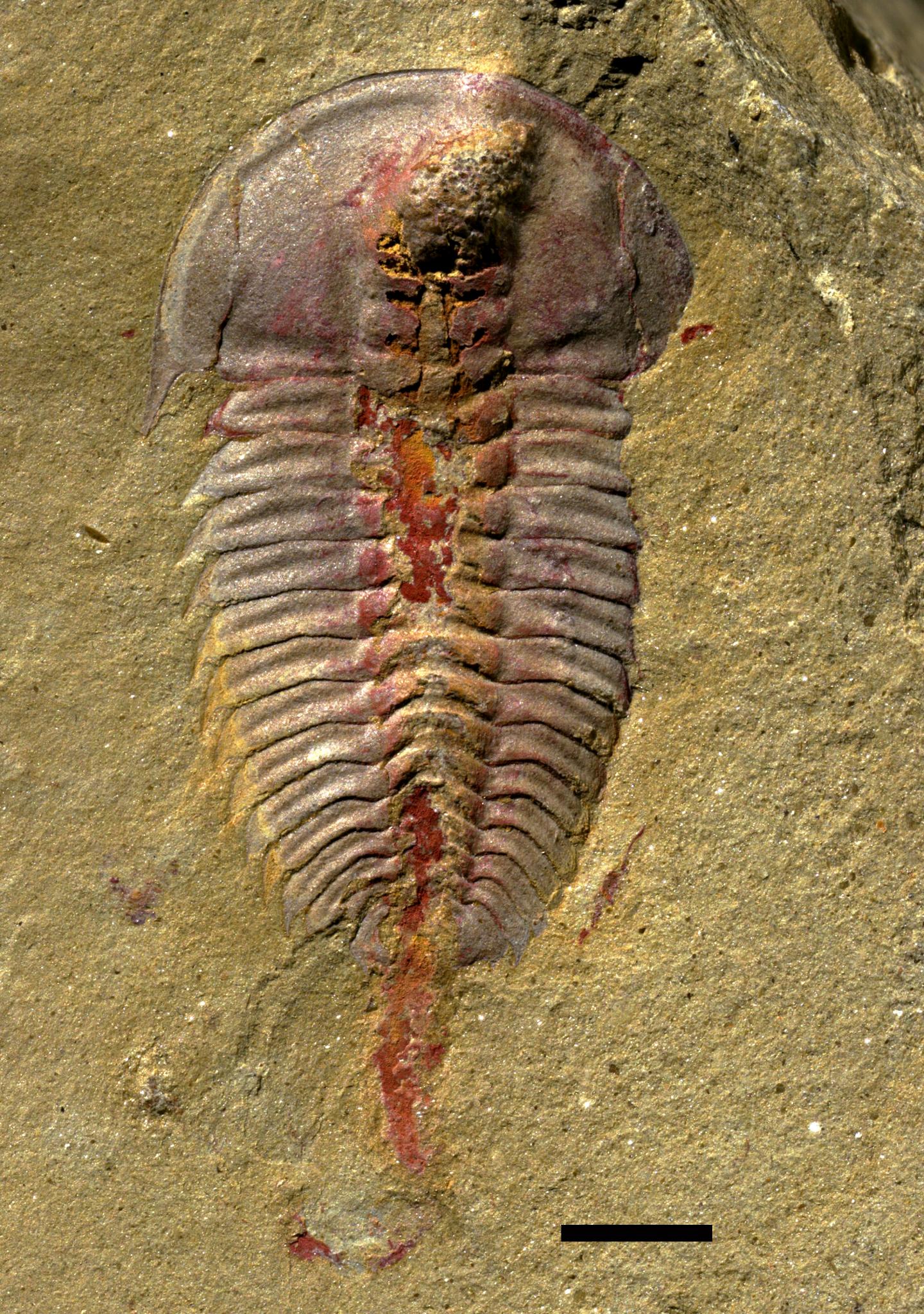
Credit: © F. Chen
Exceptionally preserved trilobite fossils from China, dating back to more than 500 million years ago, have revealed new insights into the extinct marine animal's digestive system. Published today in the journal PLOS ONE, the new study shows that at least two trilobite species evolved a stomach structure 20 million years earlier than previously thought.
"Trilobites are one of the first types of animals to show up in large numbers in the fossil record," said lead author Melanie Hopkins, an assistant curator in the Division of Paleontology at the American Museum of Natural History. "Their exoskeletons were heavy in minerals, and so they preserved really well. But like all fossils, it's very rare to see the preservation of soft tissues like organs or appendages in trilobites, and because of this, our knowledge of the trilobite digestive system comes from a small number of specimens. The new material in this study really expands our understanding."
Trilobites are a group of extinct marine arthropods–distantly related to the horseshoe crab–that lived for almost 300 million years. They were extremely diverse, with about 20,000 species, and their fossil exoskeletons can be found all around the world. Most of the 270 specimens analyzed in the new study were collected from a quarry in southern Kunming, China, during an excavation led by Hopkins' co-author, Zhifei Zhang, from Northwest University in Xi'an.
Previous research suggests that two body plans existed for trilobite digestive systems: a tube that runs down the length of the trilobite's body with lateral digestive glands that would have helped process the food; or an expanded stomach, called a "crop", leading into a simple tube with no lateral glands. Until now, only the first type had been reported from the oldest trilobites. Based on this, researchers had proposed that the evolution of the crop came later in trilobite evolutionary history and represented a distinct type of digestive system.
The Chinese trilobite fossils, about 20 percent of which have soft tissue preservation, are dated to the early Cambrian, about 514 million years ago. Contradictory to the previously proposed body plans, the researchers identified crops in two different species within this material. In addition, they found a single specimen that has both a crop and digestive glands–suggesting that the evolution of trilobite digestive systems is more complex than originally proposed.
The study backs up an earlier announcement made by a separate research team, which found evidence for the unusual crop and gland pairing in a single juvenile trilobite specimen from Sweden from the late Cambrian. But the Chinese material presents the oldest example of this complex digestive system in a mature trilobite, wiping away doubts that the dual structures might just be part of the animal's early development.
"This is a very rigorous study based on multiple specimens, and it shows that we should start thinking about this aspect of trilobite biology and evolution in a different way," Hopkins said.
###
Other authors of the study include Feiyang Chen, from Northwest University in Xi'an, and Shixue Hu, from the Chengdu Institute of Geology and Mineral Resources.
This study was financially supported by the National Natural Science Foundation of China. Fossil collection was partly financed by the National 973 Program and 111 Project of China.
PLOS ONE paper: http://journals.plos.org/plosone/article?id=10.1371/journal.pone.0184982
American Museum of Natural History (amnh.org)
The American Museum of Natural History, founded in 1869, is one of the world's preeminent scientific, educational, and cultural institutions. The Museum encompasses 45 permanent exhibition halls, including the Rose Center for Earth and Space and the Hayden Planetarium, as well as galleries for temporary exhibitions. It is home to the Theodore Roosevelt Memorial, New York State's official memorial to its 33rd governor and the nation's 26th president, and a tribute to Roosevelt's enduring legacy of conservation. The Museum's five active research divisions and three cross-disciplinary centers support approximately 200 scientists, whose work draws on a world-class permanent collection of more than 34 million specimens and artifacts, as well as specialized collections for frozen tissue and genomic and astrophysical data, and one of the largest natural history libraries in the world. Through its Richard Gilder Graduate School, it is the only American museum authorized to grant the Ph.D. degree and the Master of Arts in Teaching degree. Annual attendance has grown to approximately 5 million, and the Museum's exhibitions and Space Shows can be seen in venues on five continents. The Museum's website and collection of apps for mobile devices extend its collections, exhibitions, and educational programs to millions more beyond its walls. Visit amnh.org for more information.
Follow
Become a fan of the Museum on Facebook at facebook.com/naturalhistory, and follow us on Instagram at @AMNH, Tumblr at amnhnyc, or Twitter at twitter.com/AMNH.
Media Contact
Kendra Snyder
[email protected]
212-496-3419
@amnh
http://www.amnh.org
Related Journal Article
http://dx.doi.org/10.1371/journal.pone.0184982





